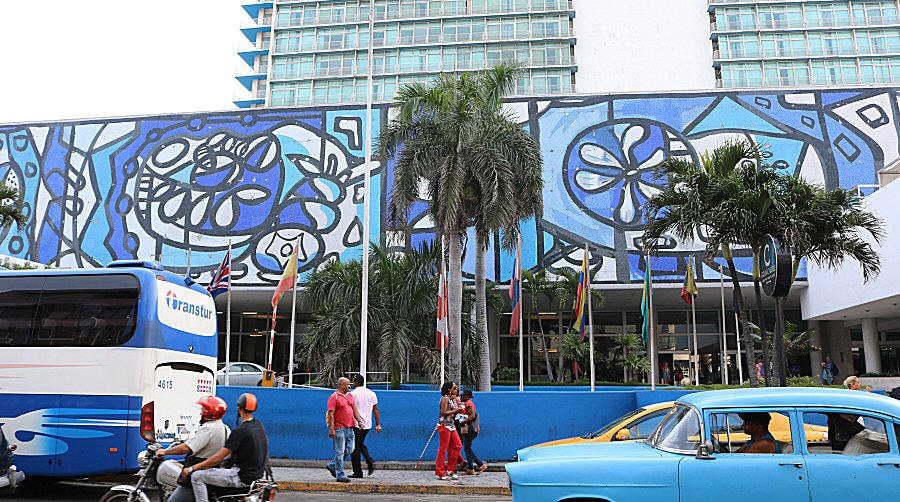
THE HOTEL
The Hotel Habana Libre occupies an
area about 90 thousand square meters. The total height of
the building is 126 meters above the ground.
It has 630 rooms and 42 suites,
distributed to the 25 floors above the large lobby and the
mezzanine. Two levels below the ground floor are occupied by
the closed car parking with a capacity of about 500 cars.
The hotel has three restaurants
and three bars. The restaurant Polinesio was put to service
as a chain of the American Trader Vic’s in 1958. Trader
Vic’s is a Polynesian-themed restaurant chain, headquartered
in California. When the Hotel Hilton Habana was
nationalized, the Trader Vici’s of the hotel changed its
name to Polinesio. Today, much of the original Trader Vic’s
exotic-themed decoration is preserved in Polinesio that
still operates with the original Tiki bar concept, serving
especially rum-based cocktails. The restaurant El Barracón
is specialized in Italian and Cuban food, whereas the
restaurant Las Antillas in Creole food. In front of the
hotel there is also the Cafetería La Rampa.
The Casa del Habano, located in
the lobby, has an area of 160 square meters that makes it
the largest Casa del Habano in Cuba. La Casa del Habano is
an internationally registered trademark, owned by
Corporación Habanos SA. In this place you can taste your
favorite Cuban cigar without being disturbed, get the vitola
that pleases you and keep it in the appropriate humidor
until your next visit, or simply accompany your Cuban cigar
with a good Cuban rum or a freshly brewed Cuban coffee.
The 25. floor is occupied by the
Sierra Maestra Panoramic Room that offers an incomparably
attractive view of important places in the city and the bay,
and the Disco Cabaret Turquino. The Disco Cabaret Turquino
has glass all around and a retractable roof. When everyone
hits the dance floor around midnight, the roof slides back
and everybody dances under the light of the moon and the
brightness of the stars. There is often a popular band and
disco following the cabaret show; consequently, the
decoration is definitely disco. It is open from 22:00 to
04:00 (for reservation call (+53) 7 8346100).
